By Angeline P. Hoffman, White Mountain Apache Reservation
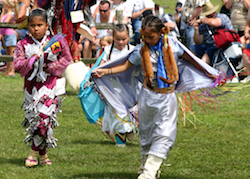 Stories of Indigenous people matter. The stories influence how we think about ourselves, where we come from and formulate the way in which we think about cultural perspectives and people.
Stories of Indigenous people matter. The stories influence how we think about ourselves, where we come from and formulate the way in which we think about cultural perspectives and people.
In Indigenous culture children emerge with clearly delineated, gender-specific roles, much like the distinct roles of adults. Native children are cherished by their extended family. They are revered as those who will follow to carry on the ways of the people. To a child of an Indian Nation, education is an ongoing experience lasting a lifetime. An Indian child in a traditional situation is assured of one thing: he or she will never be without a home and loving relatives.
In addition, Childhood is a time of new possibilities. The excitement of being recognized for mastering competencies and developing skills is present. It may not always involve the western idea of “winning,” but affirms their incremental accomplishments along their life journey.
The following Indigenous Children’s literature text set is based on the Native children:
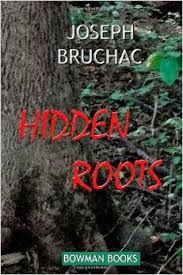 Hidden Roots (Bruchac, 2011) focuses on the loss of identity, history, culture, lack of self-worth and the apprehension that Abenaki people felt. Today they still feel the great impact of what generations of Abenaki have had to deal with. This is a book that should be read in every middle school class, so that this history will not be forgotten and never be repeated. Middle grade readers love to see life as “being fair,” and will understand how life is not fair in this story.
Hidden Roots (Bruchac, 2011) focuses on the loss of identity, history, culture, lack of self-worth and the apprehension that Abenaki people felt. Today they still feel the great impact of what generations of Abenaki have had to deal with. This is a book that should be read in every middle school class, so that this history will not be forgotten and never be repeated. Middle grade readers love to see life as “being fair,” and will understand how life is not fair in this story.
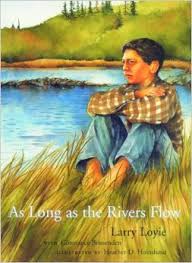 As Long as the River Flows(Loyle, Holmlund & Brissenden, 2005). Starting in the 1800s and continuing into the 20th century, First Nations children were, against their will, taken to government-sponsored residential schools in an attempt to remove their traditional languages and cultures. This book tells of one such child, author Larry Loyie, and his last summer with his Cree tribe. It is a time of learning and adventure. He cares for an abandoned baby owl, watches his grandmother make winter moccasins, and sees her kill a huge grizzly with one shot. The sensitive, beautifully expressive text instills the joy and history of a First Nations family and their last summer together.
As Long as the River Flows(Loyle, Holmlund & Brissenden, 2005). Starting in the 1800s and continuing into the 20th century, First Nations children were, against their will, taken to government-sponsored residential schools in an attempt to remove their traditional languages and cultures. This book tells of one such child, author Larry Loyie, and his last summer with his Cree tribe. It is a time of learning and adventure. He cares for an abandoned baby owl, watches his grandmother make winter moccasins, and sees her kill a huge grizzly with one shot. The sensitive, beautifully expressive text instills the joy and history of a First Nations family and their last summer together.
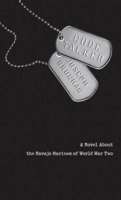 Code Talker: A Novel about the Navajo Marines of World War Two (Bruchac, 2006) Code Talker is about the Navajo Marines, one of the unsung heroes of World War II. The Navajo both developed an unbreakable code (all other codes were broken by the Japanese) and risked their lives in battle to transmit messages that used their native language. The book, Code Taker, begins with one boy’s life experiences; being a Navajo, joining the service at a young age, and helping add to the rich history of the Navajo People.
Code Talker: A Novel about the Navajo Marines of World War Two (Bruchac, 2006) Code Talker is about the Navajo Marines, one of the unsung heroes of World War II. The Navajo both developed an unbreakable code (all other codes were broken by the Japanese) and risked their lives in battle to transmit messages that used their native language. The book, Code Taker, begins with one boy’s life experiences; being a Navajo, joining the service at a young age, and helping add to the rich history of the Navajo People.
 Indian Shoes (Smith & Madsen, 2002) Ray Halfmoon prefers high-tops, but he gladly trades them for a nice pair of beautiful beaded moccasins for his Grampa. After all, it is Grampa Halfmoon who is respected by Ray because he was there when he needed support and guidance by helping him when he was forced to get creative after a homemade haircut makes Ray’s head look like a lawn-mowing accident. This interrelated story is heartwarming and laugh-out-loud funny. Cynthia Leitich Smith writes about what it’s like to grow up as a Seminole-Cherokee boy who is just as happy pounding the pavement in windy Chicago as rowing on a lake in rural Oklahoma.
Indian Shoes (Smith & Madsen, 2002) Ray Halfmoon prefers high-tops, but he gladly trades them for a nice pair of beautiful beaded moccasins for his Grampa. After all, it is Grampa Halfmoon who is respected by Ray because he was there when he needed support and guidance by helping him when he was forced to get creative after a homemade haircut makes Ray’s head look like a lawn-mowing accident. This interrelated story is heartwarming and laugh-out-loud funny. Cynthia Leitich Smith writes about what it’s like to grow up as a Seminole-Cherokee boy who is just as happy pounding the pavement in windy Chicago as rowing on a lake in rural Oklahoma.
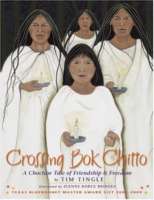 Crossing Bok Chitto: A Choctaw tale of Friendship & Freedom (Tingle & Bridges, 2006) The setting take place “at a river called Bok Chitto that cuts through Mississippi. In the days before the War Between the States, in the days before the Trail of Tears, Bok Chitto was a boundary. On one side of the river lived the Choctaws. On the other side lived the plantation owners and their slaves. If a slave escaped and made his way across Bok Chitto, the slave was free.” Thus begins Crossing Bok Chitto, told by award-winning Choctaw storyteller Tim Tingle and brought to life with the rich illustrations of Jeanne Rorex Bridges.
Crossing Bok Chitto: A Choctaw tale of Friendship & Freedom (Tingle & Bridges, 2006) The setting take place “at a river called Bok Chitto that cuts through Mississippi. In the days before the War Between the States, in the days before the Trail of Tears, Bok Chitto was a boundary. On one side of the river lived the Choctaws. On the other side lived the plantation owners and their slaves. If a slave escaped and made his way across Bok Chitto, the slave was free.” Thus begins Crossing Bok Chitto, told by award-winning Choctaw storyteller Tim Tingle and brought to life with the rich illustrations of Jeanne Rorex Bridges.
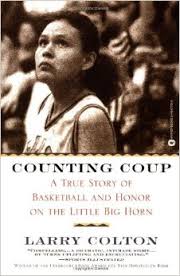 Counting Coup: A True Story of Basketball and Honor on the Little Big Horn (Colton, 2001) In Native American tradition, a warrior gained honor and glory by “counting coup” — touching his enemy in battle and living to tell the tale. There is a modern story of this journalism related by Larry Colton, who journeys into the world of Montana’s Crow Indians and follows the struggles of a talented, moody, charismatic young woman named Sharon LaForge who is a gifted basketball player and a descendant of one of George Armstrong Custer’s Indian scouts. Along the banks of the Little Big Horn, Indians and whites continue to live in age-old conflicts and young Indians grow up without role models or dreams. Sharon carries the hopes and frustrations of her people on her shoulders as she battles her opponents on and off the court.
Counting Coup: A True Story of Basketball and Honor on the Little Big Horn (Colton, 2001) In Native American tradition, a warrior gained honor and glory by “counting coup” — touching his enemy in battle and living to tell the tale. There is a modern story of this journalism related by Larry Colton, who journeys into the world of Montana’s Crow Indians and follows the struggles of a talented, moody, charismatic young woman named Sharon LaForge who is a gifted basketball player and a descendant of one of George Armstrong Custer’s Indian scouts. Along the banks of the Little Big Horn, Indians and whites continue to live in age-old conflicts and young Indians grow up without role models or dreams. Sharon carries the hopes and frustrations of her people on her shoulders as she battles her opponents on and off the court.
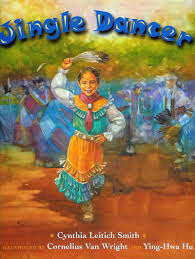 Jungle Dancer (Smith, Ying-Haw Hu & Wright, 2000) The story tells the sustaining story of how a modern Native American girl turns to her family and community to help her dance find a voice. Tink, tink, tink, tink, sang cone-shaped jingles sewn to Grandma Wolfe’s dress. Jenna loves the tradition of jingle dancing that has been shared by generations of women in her family. She hopes to dance at the next powwow. But she has a problem—how will her dress sing if it has no jingles?
Jungle Dancer (Smith, Ying-Haw Hu & Wright, 2000) The story tells the sustaining story of how a modern Native American girl turns to her family and community to help her dance find a voice. Tink, tink, tink, tink, sang cone-shaped jingles sewn to Grandma Wolfe’s dress. Jenna loves the tradition of jingle dancing that has been shared by generations of women in her family. She hopes to dance at the next powwow. But she has a problem—how will her dress sing if it has no jingles?
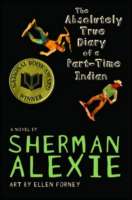 The Absolutely True Diary of a Part-Time Indian (Alexie & Forney, 2009) Heartbreaking, funny, and beautifully written, The Absolutely True Diary of a Part-Time Indian, which is based on the author’s own experiences, coupled with poignant drawings by Ellen Forney that reflect the character’s art, chronicles the contemporary adolescence of one Native American boy as he attempts to break away from the life he was destined to live.
The Absolutely True Diary of a Part-Time Indian (Alexie & Forney, 2009) Heartbreaking, funny, and beautifully written, The Absolutely True Diary of a Part-Time Indian, which is based on the author’s own experiences, coupled with poignant drawings by Ellen Forney that reflect the character’s art, chronicles the contemporary adolescence of one Native American boy as he attempts to break away from the life he was destined to live.
 Sky Sister (Waboose & Deines, 2009) The story is about two Ojibway sisters who set off across the frozen north country to see the Sky Spirits’ midnight dance, and after an exhilarating walk and patient waiting, the girls are rewarded by the arrival of the Sky Spirits: the Northern Lights
Sky Sister (Waboose & Deines, 2009) The story is about two Ojibway sisters who set off across the frozen north country to see the Sky Spirits’ midnight dance, and after an exhilarating walk and patient waiting, the girls are rewarded by the arrival of the Sky Spirits: the Northern Lights
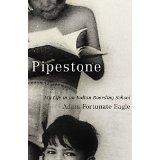 Pinestone: My Life in a Boarding School (Eagle & Hauptman, 2010) Adam Fortunate Eagle turns an unforgettable story into a memoir of his years as a young student at Pipestone Indian Boarding School in Minnesota. Fortunate Eagle lives up to his reputation as a “contrary warrior” by disproving the popular view of Indian boarding schools as bleak and prisonlike. Fortunate Eagle attended Pipestone between 1935 and 1945, just as Commissioner of Indian Affairs John Collier’s pluralist vision was reshaping the federal boarding school system to promote greater respect for Native cultures and traditions. Telling this story in the voice of his younger self, the author takes us on a journey into his childhood and the inner world of the boarding school life.
Pinestone: My Life in a Boarding School (Eagle & Hauptman, 2010) Adam Fortunate Eagle turns an unforgettable story into a memoir of his years as a young student at Pipestone Indian Boarding School in Minnesota. Fortunate Eagle lives up to his reputation as a “contrary warrior” by disproving the popular view of Indian boarding schools as bleak and prisonlike. Fortunate Eagle attended Pipestone between 1935 and 1945, just as Commissioner of Indian Affairs John Collier’s pluralist vision was reshaping the federal boarding school system to promote greater respect for Native cultures and traditions. Telling this story in the voice of his younger self, the author takes us on a journey into his childhood and the inner world of the boarding school life.
These stories relate to self-images with the main character striving to find identity through the knowledge and understanding by those with whom they are related. These are only a few of the books with Indigenous children. Next week I will provide a different text set of Indigenous Children’s literature from the United States and International Indigenous Children’s Literature. Thank you.
Please visit wowlit.org to browse or search our growing database of books, to read one of our two on-line journals, or to learn more about our mission.
- Themes: Angeline Hoffman
- Descriptors: Books & Resources, WOW Currents
